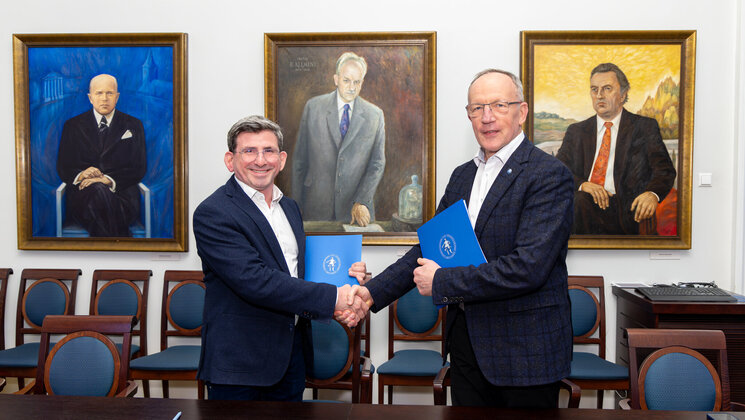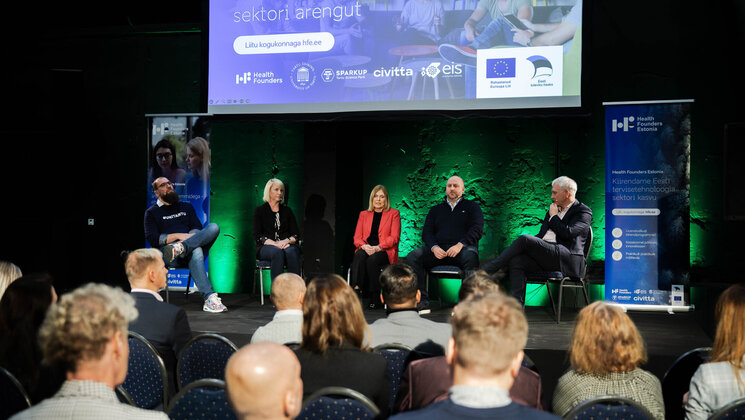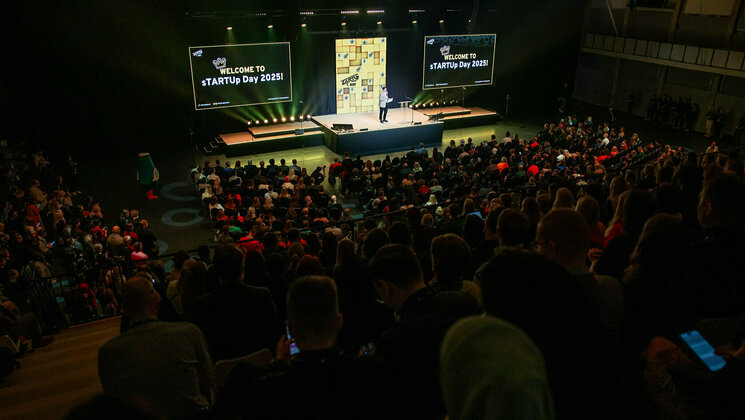-
Faculty of Arts and HumanitiesDean's Office, Faculty of Arts and HumanitiesJakobi 2, r 116-121 51005 Tartu linn, Tartu linn, Tartumaa EST0Institute of History and ArchaeologyJakobi 2 51005 Tartu linn, Tartu linn, Tartumaa EST0Institute of Estonian and General LinguisticsJakobi 2, IV korrus 51005 Tartu linn, Tartu linn, Tartumaa EST0Institute of Philosophy and SemioticsJakobi 2, III korrus, ruumid 302-337 51005 Tartu linn, Tartu linn, Tartumaa EST0Institute of Cultural ResearchÜlikooli 16 51003 Tartu linn, Tartu linn, Tartumaa EST0Institute of Foreign Languages and CulturesLossi 3 51003 Tartu linn, Tartu linn, Tartumaa EST0School of Theology and Religious StudiesÜlikooli 18 50090 Tartu linn, Tartu linn, Tartumaa EST0Viljandi Culture AcademyPosti 1 71004 Viljandi linn, Viljandimaa EST0Professors emeriti, Faculty of Arts and Humanities0Associate Professors emeriti, Faculty of Arts and Humanities0Faculty of Social SciencesDean's Office, Faculty of Social SciencesLossi 36 51003 Tartu linn, Tartu linn, Tartumaa EST0Institute of EducationJakobi 5 51005 Tartu linn, Tartu linn, Tartumaa EST0Johan Skytte Institute of Political StudiesLossi 36, ruum 301 51003 Tartu linn, Tartu linn, Tartumaa EST0School of Economics and Business AdministrationNarva mnt 18 51009 Tartu linn, Tartu linn, Tartumaa EST0Institute of PsychologyNäituse 2 50409 Tartu linn, Tartu linn, Tartumaa EST0School of LawNäituse 20 - 324 50409 Tartu linn, Tartu linn, Tartumaa EST0Institute of Social StudiesLossi 36 51003 Tartu linn, Tartu linn, Tartumaa EST0Narva CollegeRaekoja plats 2 20307 Narva linn, Ida-Virumaa EST0Pärnu CollegeRingi 35 80012 Pärnu linn, Pärnu linn, Pärnumaa EST0Professors emeriti, Faculty of Social Sciences0Associate Professors emeriti, Faculty of Social Sciences0Faculty of MedicineDean's Office, Faculty of MedicineRavila 19 50411 Tartu linn, Tartu linn, Tartumaa ESTInstitute of Biomedicine and Translational MedicineBiomeedikum, Ravila 19 50411 Tartu linn, Tartu linn, Tartumaa ESTInstitute of PharmacyNooruse 1 50411 Tartu linn, Tartu linn, Tartumaa ESTInstitute of DentistryL. Puusepa 1a 50406 Tartu linn, Tartu linn, Tartumaa ESTInstitute of Clinical MedicineL. Puusepa 8 50406 Tartu linn, Tartu linn, Tartumaa ESTInstitute of Family Medicine and Public HealthRavila 19 50411 Tartu linn, Tartu linn, Tartumaa ESTInstitute of Sport Sciences and PhysiotherapyUjula 4 51008 Tartu linn, Tartu linn, Tartumaa ESTProfessors emeriti, Faculty of Medicine0Associate Professors emeriti, Faculty of Medicine0Faculty of Science and TechnologyDean's Office, Faculty of Science and TechnologyVanemuise 46 - 208 51003 Tartu linn, Tartu linn, Tartumaa ESTInstitute of Computer ScienceNarva mnt 18 51009 Tartu linn, Tartu linn, Tartumaa ESTInstitute of GenomicsRiia 23b/2 51010 Tartu linn, Tartu linn, Tartumaa ESTEstonian Marine Institute0Institute of PhysicsInstitute of ChemistryRavila 14a 50411 Tartu linn, Tartu linn, Tartumaa EST0Institute of Mathematics and StatisticsNarva mnt 18 51009 Tartu linn, Tartu linn, Tartumaa EST0Institute of Molecular and Cell BiologyRiia 23, 23b - 134 51010 Tartu linn, Tartu linn, Tartumaa ESTTartu ObservatoryObservatooriumi 1 61602 Tõravere alevik, Nõo vald, Tartumaa EST0Institute of TechnologyNooruse 1 50411 Tartu linn, Tartu linn, Tartumaa ESTInstitute of Ecology and Earth SciencesJ. Liivi tn 2 50409 Tartu linn, Tartu linn, Tartumaa ESTProfessors emeriti, Faculty of Science and Technology0Associate Professors emeriti, Faculty of Science and Technology0Institute of BioengineeringArea of Academic SecretaryHuman Resources OfficeUppsala 6, Lossi 36 51003 Tartu linn, Tartu linn, Tartumaa EST0Area of Head of FinanceFinance Office0Area of Director of AdministrationInformation Technology Office0Administrative OfficeÜlikooli 17 (III korrus) 51005 Tartu linn, Tartu linn, Tartumaa EST0Estates Office0Marketing and Communication OfficeÜlikooli 18, ruumid 102, 104, 209, 210 50090 Tartu linn, Tartu linn, Tartumaa EST0Area of Vice Rector for ResearchUniversity of Tartu LibraryW. Struve 1 50091 Tartu linn, Tartu linn, Tartumaa EST0Grant OfficeArea of Vice Rector for DevelopmentCentre for Entrepreneurship and InnovationNarva mnt 18 51009 Tartu linn, Tartu linn, Tartumaa EST0University of Tartu Natural History Museum and Botanical GardenVanemuise 46 51003 Tartu linn, Tartu linn, Tartumaa EST0International Cooperation and Protocol Office0University of Tartu MuseumLossi 25 51003 Tartu linn, Tartu linn, Tartumaa EST0Area of RectorRector's Strategy OfficeInternal Audit OfficeArea of Vice Rector for Academic AffairsOffice of Academic Affairs0University of Tartu Youth AcademyUppsala 10 51003 Tartu linn, Tartu linn, Tartumaa EST0Student Union OfficeÜlikooli 18b 51005 Tartu linn, Tartu linn, Tartumaa EST0Centre for Learning and Teaching
Topic: entrepreneurship
The Industrial Master's Programme in IT received a record amount of companies and students this year
The Industrial Master’s Programme in IT attracted a record number of applicants. A total of 18 companies are participating, and 54 master’s students applied for the available positions.
As last year, University of Tartu supports nine scientific discoveries with business potential
The University of Tartu Feasibility Fund received a record number of 53 grant applications, nine of which will receive funding in the total amount of 315,000 euros.
31. March 2025
entrepreneurship
University of Tartu signed cooperation agreement with subsidiary of Karl Storz, Europe’s largest producer of surgical equipment
On Monday, 24 March, a producer of medical endoscopes, OÜ Karl Storz Video Endoscopy Estonia, and the University of Tartu signed a cooperation agreement.
University is set to support the development of the Estonian economy in health technology accelerator Health Founders Estonia
Estonia's new ambitious goal is to become a global health technology hub. On 19 March, the Estonian Health Economy Association, the University of Tartu, Tartu Science Park and Civitta Estonia officially launched the health technology accelerator Health Founders Estonia, which will bring together science, medicine and business to help tackle some of the biggest challenges in health care.
25. March 2025
entrepreneurship
AS Medisoft and the University of Tartu are simplifying the work of general physicians
AS Medisoft, in collaboration with the Institute of Computer Science and AIRE, is testing the use of large language models to automate the documentation of general physician's (GP) visits.
Mihkel Tammo: to revive Estonia’s economy, it is necessary to debunk myths hindering research-intensive entrepreneurship
The development of Estonia’s economy can be ensured in the long term only by high-added-value and research-intensive entrepreneurship. This has been said by President Alar Karis, former Prime Minister Kaja Kallas and many economic analysts, among others.
28. February 2025
entrepreneurship
Best deep-tech pitch at Startup Day dealt with removing heavy metals from water
The winner of the UniTartu Deep Tech Pitch Match, Pro-1 NaNoSolutions, develops a sand-based nanocomposite filter for removing heavy metals and radioactive elements from water.
05. February 2025
entrepreneurship
Patent attorney Peter Marchand provides insights into patents
On Wednesday 29 January, from 10:00-12:00, patent attorney Peter Marchand will be providing insights into patents. All interested researchers and PhD students are welcome.
16. January 2025
entrepreneurship
University of Tartu debunks myths about deep tech entrepreneurship at Startup Day
29–31 January sees the 9th Startup Day business festival. The University of Tartu will showcase its entrepreneurial research activities in the demo area, discuss the myths of the deep tech business on the main stage, and lead and organise seminars and side events.
30. December 2024
entrepreneurship
Data Science Seminar "Triple-Helix Collaboration on Data"
The Data Science Seminar "Triple-Helix Collaboration on Data" will focus on the synergy between academia, industry, and government known as the "triple-helix" model.










